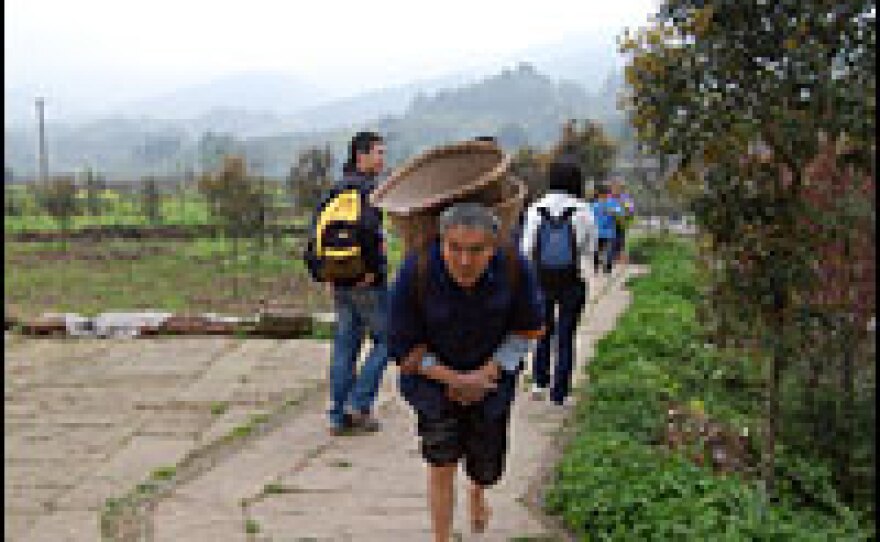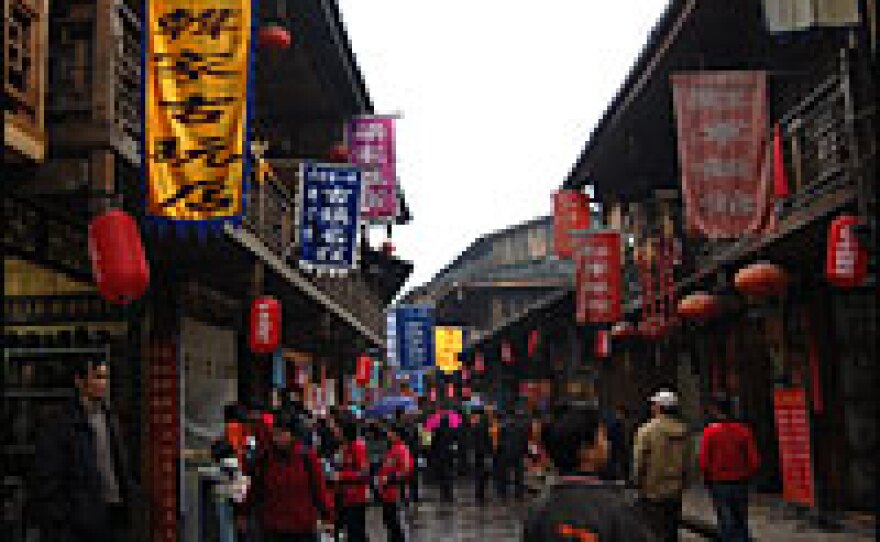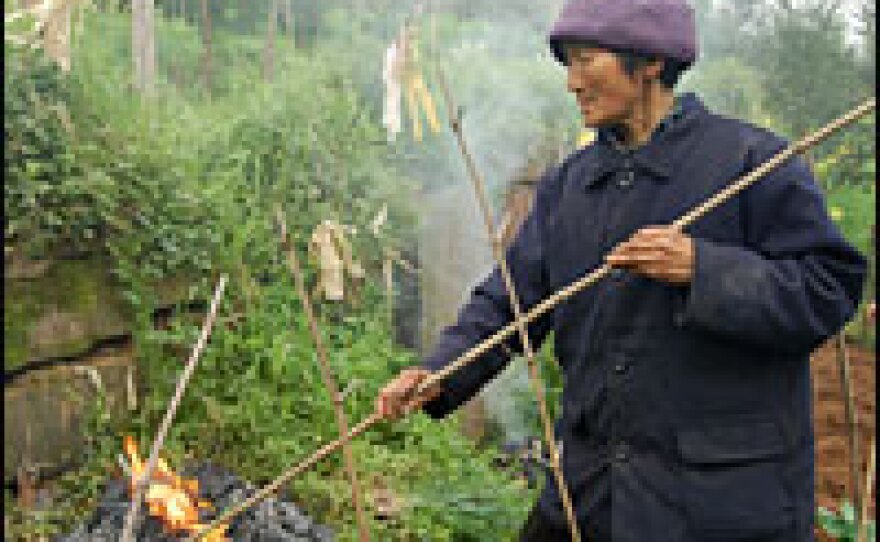




The economic boom in China means there are now millions of urban Chinese with disposable income — and with cars.
For them, trips to the countryside have become regular diversions, giving these city dwellers a taste of rural life. Ads tout the peace and tranquillity of mountain escapes.
In May, the Sichuan earthquake showed that the countryside could also be anything but tranquil. Whole mountainsides were sheared away. Rural retreats were flattened.
For more than a month after the earthquake, the Sichuan village of Shangli watched its thriving tourism business evaporate. Before the earthquake, on a peak weekend, the village might attract 10,000 visitors.
Right after the earthquake, nobody came even though Shangli sustained no damage.
But then, news reports named Shangli as a destination that had escaped the destruction. And now more people than ever before are flocking there because so many other tourist areas are closed.
So, once again, tourism is booming in Shangli, in the region of Ya'an, about 80 miles southwest of the provincial capital, Chengdu.
In a visit to the town in the spring, two very different worlds collided.
A Jarring Contrast
Shangli is marketed to nostalgic Chinese as an "ancient town."
On Shangli's bustling pedestrian commercial strip, visitors from the city can buy cowboy hats, plastic toy pianos and magnetic beads that dance like magic in the air. They can wield a mallet at Whack-a-Mole or pick up a poster of Chairman Mao Zedong.
To cross the Yellow Thatch Creek that runs through town, tourists hop on stones. They take pictures of peasants such as Li Shi Long, who readied a small patch of land for rice planting.
"We're happy to see [the tourists]," Li said. "The more visitors we have, the richer we'll get. The more people, the better."
The contrast between the old world and the new is jarring.
Visitors in miniskirts and heels jabber on cell phones, crossing paths with wizened farmers doubled over from the weight of the vegetables they carry in baskets on their backs.
Xie Zhi Hui from Chengdu brought her 4-year-old daughter to Shangli.
"The air is clear and fresh," she said. "And the people are rustic. It's great to bring my daughter here to see this way of life."
Paying Homage To Ancestors
In April, for the Qing Ming holiday, or tomb-sweeping day, residents of Shangli honored their ancestors by tending to their graves. They lit firecrackers or burned incense and candles.
And with so many tourists visiting that weekend, it was also an opportunity.
Liu Guanglian, 70, bowed before her husband's ancestors' graves.
She asked some visiting students to donate about 15 cents at the tombstones. In return, she said her ancestors would see to it that they have prosperous lives.
"I wanted to come to Shangli to see the ancient landscape," said Yang Ping, a 24-year-old student from Chengdu. "It's said there are relics here dating back to the Qing Dynasty [circa 1644 -1911]. Those of us born after 1980, we don't know much about this. So we can come here and learn from the experience and get a taste of ancient times."
Down in the village, Liu Guanglian's husband, Yang Ji Quan, picked up a megaphone and urged visitors to come visit the Yang family's 150-year-old home.
"Come see the well in our backyard!" he exclaimed. "The water can be used to make tea! If old people drink it, they'll have a long life! If young people drink it, they'll earn more money! If students drink it, they'll get the top score on their exams!"
At twilight, oil painters set up easels on a flat stone near the creek that runs through Shangli. They painted the 300-year-old Bridge of the Immortals.
The bridge crawled with tourists, but the painters left them out entirely. The Shangli captured on their canvases was idyllic — an ancient stone bridge with a waterfall. An untouched, perfect landscape.
Copyright 2022 NPR. To see more, visit https://www.npr.org. 9(MDAzMjM2NDYzMDEyMzc1Njk5NjAxNzY3OQ001))






